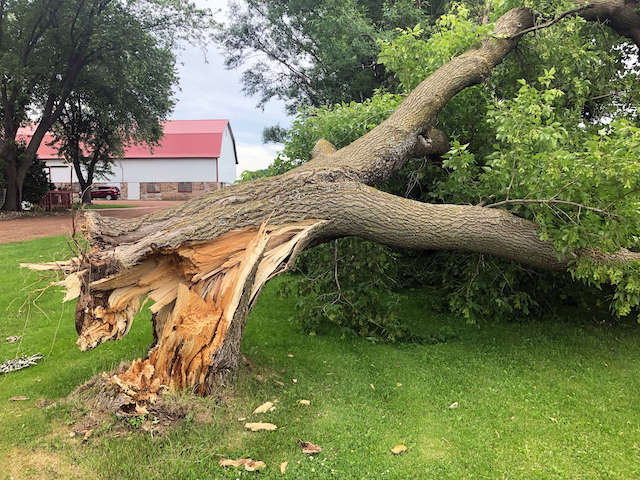Article is not a replacement for having your tree inspected.
Unstable Structure
In its natural forest environment; a sapling tree is diligently parented by its elders. The close neighbours don’t allow horizontal growth and actively restrict or supply resources, to the young upstarts. This trains the tree into a sturdy shape and the slow growth develops strong, dense wood. Some proving so durable; many standing today were by our standards already old, when Europeans arrived in America.
Urban trees are unfortunately usually the equivalent of an unsupervised teenager. Living high on the hog; they grow fast; soft, air filled wood, and their canopies grow into unstable wide shapes. When not properly cared for; these trees have a small fraction of the life expectancy.
What to watch for:
- Large heavy branches extending horizontally far away from the tree
- Heavy leaning; including the ground around the tree appearing to be heaving or bulging
- “V” shaped joints are much less stable than “U” shaped joints. They should be monitored regularly for bleeding, cracking, and bulgy growth (this implies repeated attempts at healing the area as a result of the split continually re-opening in the wind.
Tip: If an Arborist company advises you to take down a cherished large tree; unless it’s an imminent safety concern; getting a quick second opinion can’t hurt. Someone else may have a strategy to stabilize and save the tree.
Discolouration and Growths
Discolouration of the bark can often be a sign of distress and structural damage. This can be caused by disease, rot, and bleeding sap (implying an open wound)
Since the heartwood of the tree (the primary structural wood) is actually old growth and no longer living tissue; it can rot right out of the tree without the tree exhibiting any obvious external symptoms. Leaving you with a giant 1500lb noodle balancing over your property.
Things to watch for:
- Large discoloured areas
- Open wounds from previous pruning or storm damage not healing
- Large amounts of ants in an area
- Mushrooms are a sure sign of structural decay.
Damaged, Dead, or Broken Limbs
Though damaged, hanging or broken limbs being a hazard may be obvious. Limb damage isn’t always apparent… A close examination for cracks and damage at the joints is advisable during your routine maintenance pruning of your large trees.
Some symptoms to look for include:
- Visible cracks
- “Bleeding” sap
- Areas with no leaves
- Visible holes (typically from animals and insects, and can be evident from saw dust at the base of the tree as well, often in poplars)
- Areas of bark missing (exposed wood)




